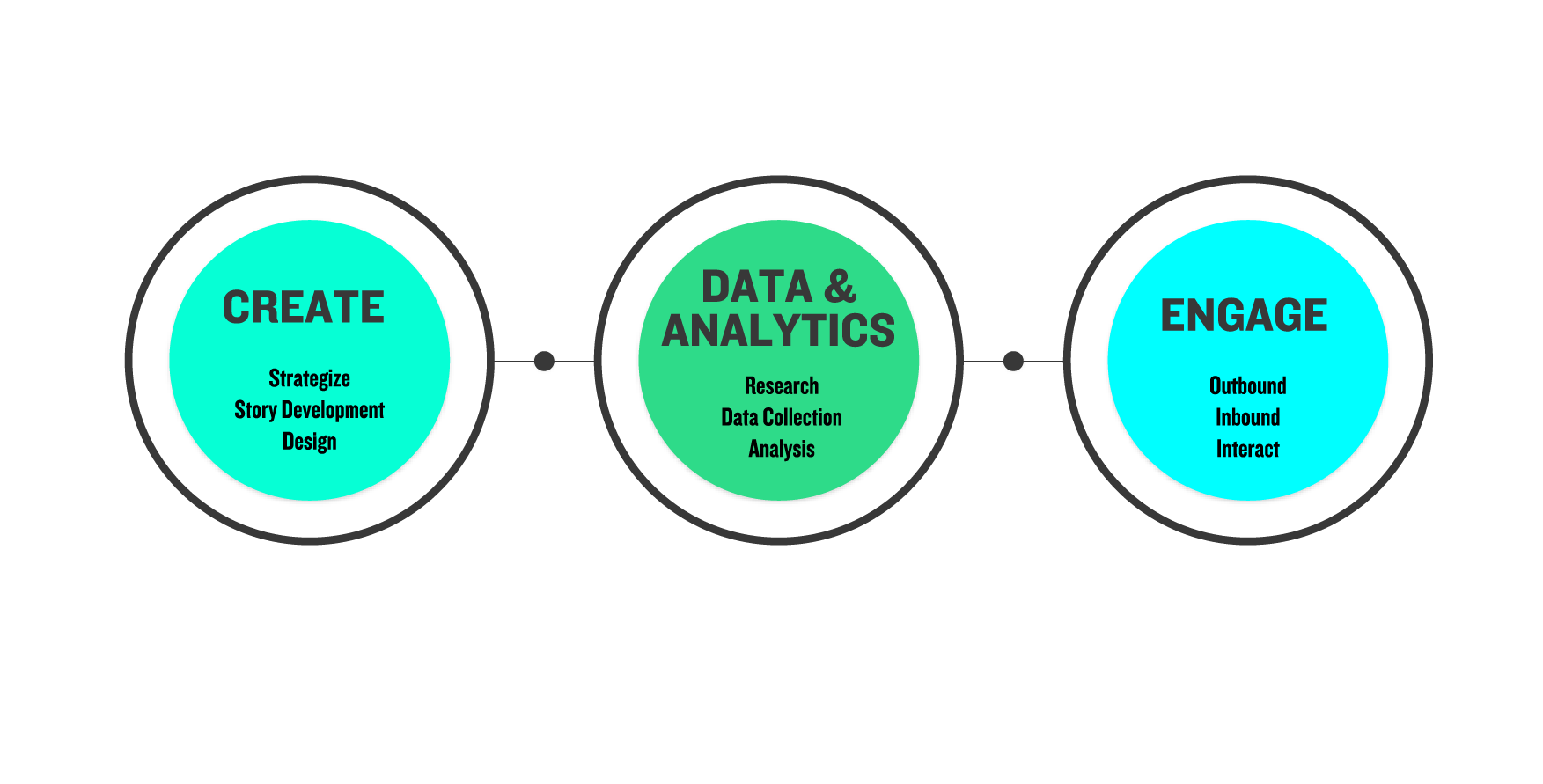
Three Stages of the Digital Marketing Life Cycle
Digital Marketing Life Cycle
Digital marketing campaigns are not built once and then left alone in the hopes that they succeed – they are living entities that must evolve over time. Executing a successful digital campaign requires continuous refinement, careful monitoring, and a great deal of patience.
I believe it’s important for marketers to view their digital campaigns as continuous cycles rather than one-off events. In this blog post, I’ll outline the responsibilities of marketers at each stage of the cycle.
A typical digital marketing campaign consists of three main stages:
- STAGE ONE: The first stage of the cycle is creating the strategy, message and design. This stage is the foundation of any good marketing campaign and should be the embodiment of your brand.
- STAGE TWO: The second stage involves distributing content and engaging your target audience through a number of tactics, including email, search marketing and social media outreach.
- STAGE THREE: The third and final stage of the cycle involves data collection and analysis. This is the point where you analyze campaign data, optimize your strategies and set benchmarks for measuring success.
Let’s take a deeper look at each stage of the cycle and flesh out some of the details.
STAGE ONE: CREATE
“Build it and they will come.” The famous phrase from the movie Field of Dreams may have worked for Kevin Costner but should not be applied to marketing campaigns. “Build it, and if it doesn’t work, try again” would be a better approach. In the creation stage, you build your strategies, stories and designs knowing that the campaign will come back around the cycle. In other words, you do not “need to hit it out of the park” in your first campaign.
Strategize
The first and most important part of the creation stage is developing your strategy. First, segment your target audience by outlining the persona of your ideal client. Ask yourself the following questions: “What demographics do your prospects fall within? What do they like and dislike? Why should they care about what you are offering? What kind of value are you providing them?”
During strategy creation, you also want to determine where your target audience will most be interested in interacting with your brand. Social media? Search engines? You want your audience to come to you, so you will need to be easily findable and be ready to make a great first impression.
Content Development
Everything depends on that first touchpoint, and at that moment, your prospects will make a snap decision on whether or not you are worthy of their attention. This is why you need to provide timely content in the form of educational, entertaining or insightful information that adds real value to their lives. You want to provide them with something that they need in order to create a strong connection that builds trust.
Design
When most people think of design, they focus mainly on colors, fonts, images and infographics. In today’s digitally-focused world, however, design is more accurately aligned with the user experience (UX). Typically, over 90% of prospects interact with your brand online before they agree to speak with you in person. That means your email, social media pages and digital assets (websites, mobile applications) need to be designed so that the end-user gets exactly what they need and feels good about their experience when they engage with you. Everything should be seamless and easy.
STAGE TWO: ENGAGE
The “engage” stage could also be interpreted as the marketing campaign stage. It is at this stage that you will leverage outbound and inbound marketing tactics meant to drive activity to your websites, social media networks and mobile applications, giving your audience an opportunity to interact with your brand.
A recent American Marketing Association article stated that the average consumer is exposed to over 10,000 brand messages per day. Another study determined that a person’s attention span is less than eight seconds. So, how do you successfully engage with your target audience in such an oversaturated marketplace? The answer is to continually drive your target audience to a robust digital marketing ecosystem where they can receive something of value and engage with your business.
Outbound Marketing
Outbound marketing includes webinars, email campaigns, cold calling, and display advertising. These methods are called “outbound marketing” because marketers push their message out to their intended audience. Outbound marketing tactics are typically high cost and less effective than inbound tactics. People use outbound marketing more as air cover for inbound campaigns and brand awareness.
Inbound Marketing
Inbound marketing tactics focus on setting up a system where you “get found” by people already wanting to learn about a topic, business, or industry. Successful inbound marketing requires setting up a digital marketing ecosystem that functions as a hub for our target audience. Websites are at the center of this hub, and campaigns are meant to attract visitors organically through search engines, media publications (e.g., blogging) and social media.
Interact
Once a prospective client has visited your website, social media page or mobile app, they have proven that they want to interact with your business in some capacity. This is why you need a staff member dedicated to responding to inquiries in a timely manner. You should also regularly post content to your website that provides real value and adds credibility to your business. It is common for prospects to visit your website multiple times before they are ready to speak with someone from the sales team. Using an automation or analytics platform that tracks visitor activity helps you determine when it’s the best time to reach out.
STAGE THREE: DATA & ANALYTICS
As marketers, the most valuable tool we have at our disposal is the ability to collect and analyze copious amounts of data and research. The collection, analysis and distribution of this data provide us important insights we can use when developing or refining campaigns. The information can also be used by executive management to make informed decisions that can impact the bottom line.
Research
Today’s market trends are constantly shifting and changing. To keep up with current trends and retain a competitive edge, conducting outside research (primary and secondary) on a regular basis is critical. Pulling together outside research will give you insights beyond the data collected from your marketing campaigns or website visitor activity. Compare outside research to what you are seeing in your campaigns and adjust your strategies accordingly.
Data Collection
Your marketing campaigns, social media pages and website all generate valuable data in many different forms. The specific data you will need to access depends on your role within the organization. Marketers working to optimize their campaigns will collect very granular data on website activity, campaign and conversion data – and look at it almost daily. Executive management will want to see data that reflects return on investment on a monthly or quarterly basis. As you collect data, the key is to make sure the right information gets to the right people at the right time.
Analysis
I could write (and probably will) an entire blog post on how to analyze marketing data, but for the purpose of this article, I’ll just cover a few key points. Make sure you regularly analyze demographic data, performance history, website traffic and more. Use your analysis to determine future strategies and to develop KPIs for benchmarking success. Remember, we are looking at this from the perspective of cycles, so your analysis will impact your next round of campaigns.
Digital Marketing Life Cycle Summary – Conclusion
With digital marketing, your perspective is just as important as the tools and platforms you use to run your campaigns. Successful marketers view their efforts as a dynamic process and make strategic modifications based on careful data analysis. Embracing a digital marketing life cycle perspective – and understanding the key stages – will help you set reasonable expectations within your team and with your internal partners.

